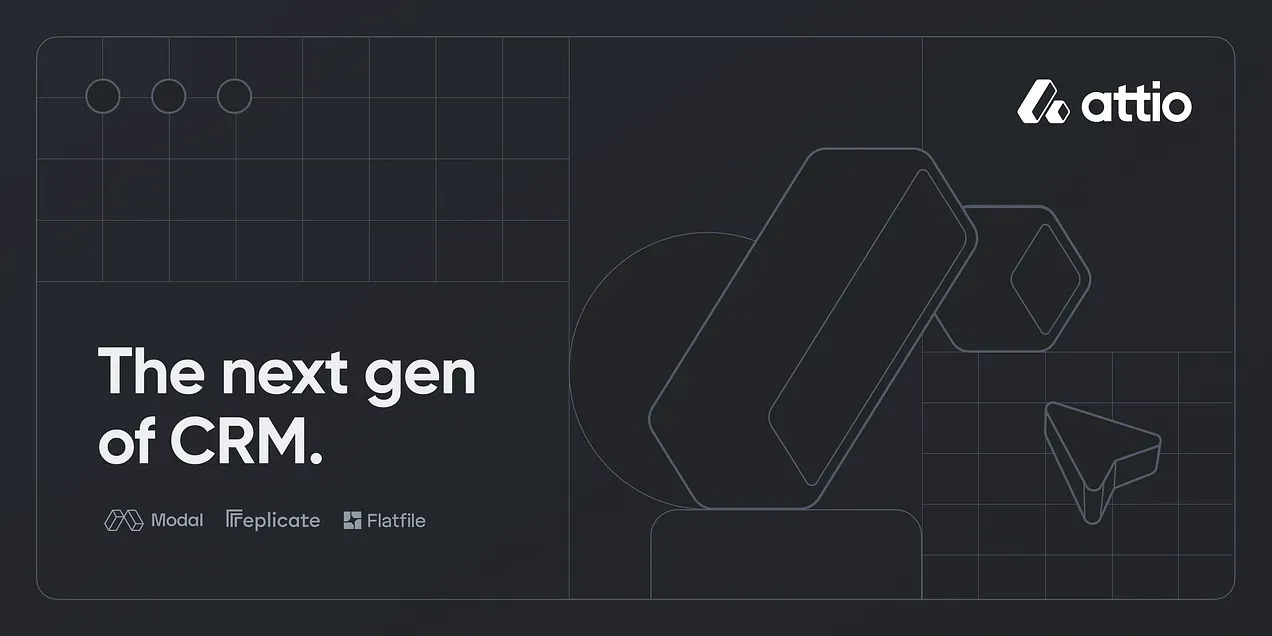He Spent $40K Building Features No One Wanted — What Every Founder Can Learn
A painful but priceless lesson every founder should read
What’s more painful than a failed startup?
Spending six months and $40,000 building something no one wants.
That’s exactly what happened to a technical founder who recently shared his story on Reddit. And it’s the kind of hard-won lesson every early-stage startup founder should learn—before it costs them their savings, their motivation, and their team’s trust.
This wasn’t just a bad build. It was a masterclass in what not to do when chasing product-market fit—and how to recover fast.
Brought to you by Attio - The CRM used by both startups and VCs (including me)
I use Attio to manage deal flow, track founder conversations, and sync everything across my team — no clunky setup required.
Startups use it as a sales CRM from day one
VCs use it for deal tracking, LPs, and intros
Fully customizable and updates automatically
It’s fast, flexible, and built for how we actually work.
Building in a Vacuum: The $40K Mistake
The founder, who had previously built automation tools and SaaS products, assumed he had found a real market gap. People were complaining about a certain pain point, and instead of talking to them, he started coding.
The logic seemed solid:
“People are frustrated, so they’ll pay for a solution.”
Wrong.
Here’s what happened:
He built in isolation.
He launched with no real feedback loop.
He added advanced features before solving basic needs.
The result? Zero traction. Not a single paying customer. Just a very expensive MVP.
The problem? He built for a hypothetical user. Not a real one.
The Recovery: From Shipping Features to Listening Hard
After the wake-up call, the founder didn’t double down. He zoomed out. And this time, he let the market talk.
Here’s what he did differently:
🟧 Listened, don’t ask: Instead of sending surveys, he set up alerts for keywords on Reddit, Twitter, forums, and G2 reviews. He wanted raw, unfiltered user pain—not polite responses.
🟧 Built a conversation database: Every pain point, workaround, or feature request was logged in a Notion doc and categorized by frequency and intensity.
🟧 Scored real needs: He created a scoring system based on:
How often the problem came up
How emotionally painful it seemed
How feasible it was to solve
The result? A roadmap built from actual user behavior—not guesswork.
He discovered that his initial vision had missed the mark. Badly. But in the process, he also found a real gap in the market—one that his competitors were ignoring.
5 Takeaways That’ll Save You Time, Money, and Sanity
This founder’s experience isn’t unique. But the way he turned it around is worth studying.
1. Complaints ≠ Demand
People complain about lots of things. That doesn’t mean they’ll pay to fix them. Validate with urgency and wallet.
2. Don’t trust interviews alone
Even great interviews lie. People say what they think they want. Watch how they actually behave.
3. Competitor reviews are gold mines
G2, Reddit, and Twitter are packed with frustration. That’s your signal.
4. Workarounds are startup gold
If your users are stitching solutions together with Zapier, Notion, and Excel... you’ve found a pain worth solving.
5. Ship what matters now
Don’t build a perfect product no one needs today. Build what solves the burning problem this week.
What Founders Should Do Right Now
If you're building a startup—or about to—take 30 minutes and:
🟧 Search Reddit, Twitter, G2, and Trustpilot for your market
🟧 Log every real pain point and workaround
🟧 Categorize by intensity and frequency
🟧 Let the data shape your roadmap
Stop asking “Would you use this?” and start observing “What are people already doing?”
Final Thought
Startups die from indifference—not hate.
This founder didn’t fail because he was a bad builder. He failed because he skipped the most important step: validating the demand before writing the code.
You don’t have to make the same mistake.
Listen early. Build slow. Validate constantly.
Your future self—and your bank account—will thank you.
🔗 Original Reddit thread — How I Wasted 6 Months Building Features Nobody Wanted
FAQ: Avoiding Startup Failure from Building Unwanted Features
❓ What’s the biggest mistake early-stage startup founders make?
One of the most common mistakes startup founders make is building a product before validating demand. Many founders—especially technical ones—assume that complaints equal market demand. They build features based on assumptions instead of data from real users. This often leads to wasted time, money, and energy.
❓ How do I validate a startup idea before building it?
To validate your startup idea:
Search for user complaints and pain points on Reddit, Twitter, G2, and industry forums
Monitor what users are already doing to solve their problems (workarounds)
Analyze competitor reviews to spot unmet needs
Conduct customer interviews, but focus more on behavior than opinions
Use no-code prototypes or landing pages to test interest before development
❓ What’s the best way to find product-market fit?
Product-market fit (PMF) is achieved when users are pulling your product out of your hands—without you pushing it. To get there:
Observe how real users behave, not just what they say
Build a conversation database to track pain points, frequency, and emotional intensity
Score each pain point for urgency and ease of implementation
Launch early and iterate based on real usage, not vision decks
❓ How can founders avoid wasting money on product development?
To avoid burning your runway:
Don’t start coding before validating demand
Use tools like Notion, Airtable, and no-code builders to prototype
Focus on solving one painful problem well before expanding features
Build for what users are doing now, not what they say they might do in the future
Track your product roadmap based on market signals, not intuition
❓ What tools can help me track user pain points?
Tools and platforms that help monitor user pain include:
Reddit & Twitter search: For real-time conversations
G2 / Capterra: For competitor reviews and user feedback
Google Alerts: To track brand or problem-related keywords
Notion / Airtable: To build your own pain point database
Zapier: To observe how users are connecting tools to work around missing functionality
❓ Is it common for startups to build features no one uses?
Yes. It’s one of the most frequent reasons early-stage startups fail. Founders often overbuild due to lack of user input, resulting in products with too many unused features and no real traction. Startups that succeed prioritize customer insight over code complexity.
❓ What’s the ROI of customer validation before building?
Customer validation can save founders tens of thousands of dollars and months of development time. Instead of guessing, you can build exactly what the market needs—leading to faster traction, higher conversion rates, and better use of capital. Validation isn’t a delay—it’s an investment in efficiency and product-market fit.
❓ Where can I read the original story about the $40K mistake?
The full story was shared by the founder on Reddit. You can read it here:
🔗 How I Wasted 6 Months Building Features Nobody Wanted






Every time I hear or read such a story, it's a pain to see the waste. Anyone with enough experience in early-stage product development would suggest:
- build less
- validate earlier
- don't *ever* ask about feedback on your product idea ("polite responses" suggests this type of questions)
Getting a decent mentor (and actually listening to them) would be one way to get there.
Spending $5k with a consultancy or agency that specializes in early-stage product development (and has enough failed products to show) would be another cheap way of doing that.
I would rather not listen to the biggest celebrities of the startup ecosystem, though. There's way too much "I've done that and it worked and thou shalt do the same" vibe there by my standards.
Great lesson on the importance of validating before building. Listening to actual user behavior and feedback can save so much time and money. Or even better, observing or asking about their past behavior, rather than their future intentions. It’s all about solving real problems, not just perceived ones.